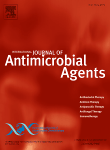Ver ítem
- xmlui.general.dspace_homeCentros e Institutos de InvestigaciónCICVyA. Centro de Investigación en Ciencias Veterinarias y AgronómicasInstituto de BiotecnologíaArtículos científicosxmlui.ArtifactBrowser.ItemViewer.trail
- Inicio
- Centros e Institutos de Investigación
- CICVyA. Centro de Investigación en Ciencias Veterinarias y Agronómicas
- Instituto de Biotecnología
- Artículos científicos
- Ver ítem
Ursolic acid : a novel antiviral compound inhibiting rotavirus infection in vitro
Resumen
Rotavirus is one of the leading causes of severe acute gastroenteritis in children under 5 years of age, mainly affecting developing countries. Once the disease is acquired, no specific treatment is available; as such, the development of new drugs for effective antirotaviral treatment is critical. Ursolic acid is a pentacyclic triterpenoid with antiviral activity, which has been studied extensively in vitro and in vivo. To study the potential
[ver mas...]
Rotavirus is one of the leading causes of severe acute gastroenteritis in children under 5 years of age, mainly affecting developing countries. Once the disease is acquired, no specific treatment is available; as such, the development of new drugs for effective antirotaviral treatment is critical. Ursolic acid is a pentacyclic triterpenoid with antiviral activity, which has been studied extensively in vitro and in vivo. To study the potential antirotaviral activity of ursolic acid, its toxic potential for viral particles (virucidal effect) and cultured cells (cytotoxicity) was analysed. No effect on virion infectivity was observed with treatments of up to 40 µM ursolic acid, while incipient cytotoxicity started to be evident with 20 µM ursolic acid. The antiviral potential of ursolic acid was evaluated in in-vitro rotavirus infections, demonstrating that 10 µM ursolic acid inhibits rotavirus replication (observed by a decrease in viral titre and the level of the main viral proteins) and affects viral particle maturation (a process associated with the endoplasmic reticulum) 15 h post infection. Interestingly, ursolic acid was also found to hamper the early stages of the viral replication cycle, as a significant reduction in the number and size of viroplasms, consistent with a decrease in VP6 and NSP2 viral proteins, was observed 4 h post infection. As such, these observations demonstrate that ursolic acid exhibits antiviral activity, suggesting that this chemical could be used as a new treatment for rotavirus.
[Cerrar]

Autor
Tohmé, M. J.;
Giménez, M. Cecilia;
Peralta, Andrea Veronica;
Colombo, M. I.;
Delgui, Laura Ruth;
Fuente
International journal of antimicrobial agents 54 (5) : 601-609. (Noviembre 2019)
Fecha
2019-11
Editorial
Elsevier
ISSN
0924-8579
Formato
pdf
Tipo de documento
artículo
Palabras Claves
Derechos de acceso
Restringido
 Excepto donde se diga explicitamente, este item se publica bajo la siguiente descripción: Creative Commons Attribution-NonCommercial-ShareAlike 2.5 Unported (CC BY-NC-SA 2.5)
Excepto donde se diga explicitamente, este item se publica bajo la siguiente descripción: Creative Commons Attribution-NonCommercial-ShareAlike 2.5 Unported (CC BY-NC-SA 2.5)

